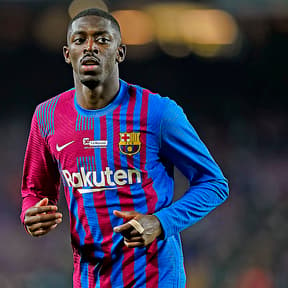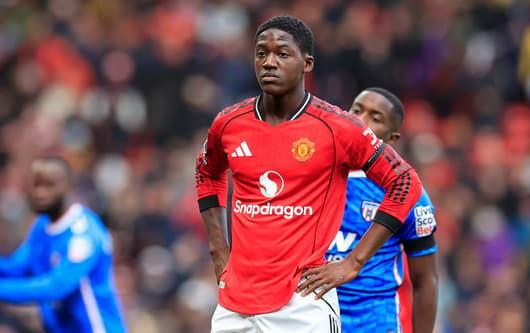Gabriel Jesus at Arsenal: Suspect finisher but elite movement and pressing
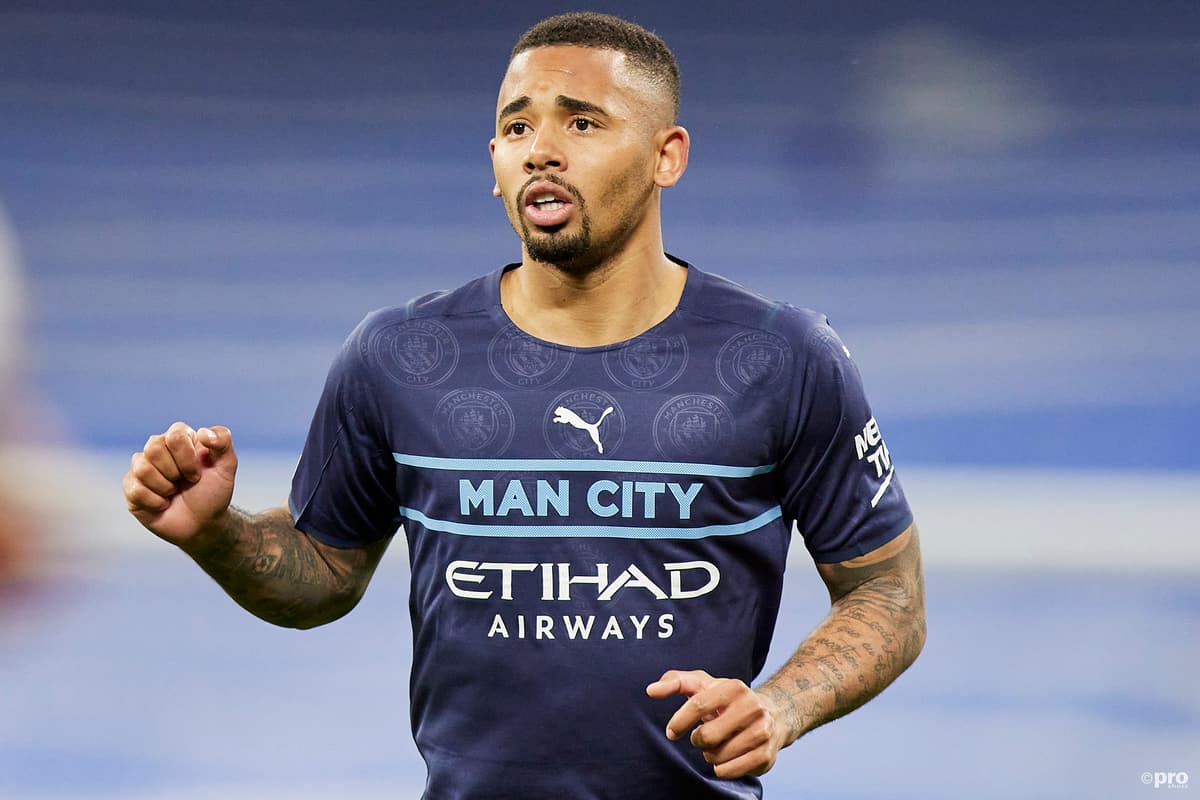
Arsenal are working very hard this summer in the transfer window as they look to strengthen their squad in preparation for the new season.
They will compete in the Europa League as well as challenge for the top four in the Premier League, so there will likely be in excess of 50 games in all competitions.
The imminent arrival of Gabriel Jesus will be their fourth signing of the window after Marquinhos, Fabio Vieira and Matt Turner. The Brazilian forward will become their most expensive signing of the window, as Arsenal will pay Manchester City £45 million for this transfer.
For City, this is a good deal as they are cashing in on a player who would certainly have fallen down the pecking order in the upcoming season following the arrivals of Erling Haaland and Julian Alvarez. Our focus will be on Arsenal in this piece, as we will try to explore how this move suits them.
Jesus has often been used as a winger at Manchester City, but he has certainly been signed to play as a striker at Arsenal given the fact that the Gunners already have a number of options out wide but are quite thin in the striker position.
Jesus’ development at Manchester City has been quite interesting. He came as an exciting young striker from Palmeiras but eventually got converted into a winger/striker hybrid as Pep Guardiola often employed a false-nine in the last couple of seasons. The Brazilian international never really had a breakthrough goalscoring season, yet he was always quite consistent. In over 9000 league minutes, he averaged 0.84 goal involvements per 90, which is a very good record.
Jesus’ profile is depicted well by his pizza chart from last season. He is a very hard worker out of possession and is always a key player in his side’s pressing. Even when his side has the ball, the Brazilian forward’s strengths lie without the ball at his feet as his clever movement allows him to get into great positions inside the box, but he is not a flair player in any way.
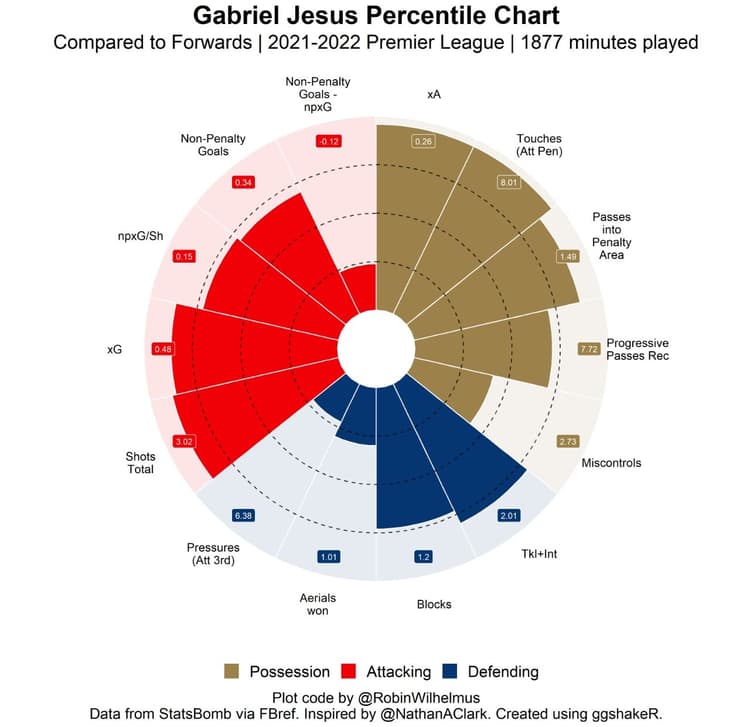
The biggest weakness in Jesus’ game, especially when he is used as a striker, is his finishing. While his off-ball movement enables him to get into great shooting positions, he often falters at the final step. In fact, he has been underperforming his xG throughout his time at Manchester City.

Of course, Arsenal would like him to work on this aspect of his game, but for them, having a consistent penalty box presence like Jesus is an improvement from their situation last season.
.
Alexandre Lacazette was their striker for the majority of the season, and while his link-up play was pretty good, he was often suspect when it came to getting on the end of cut-backs and making runs into the box. His average of 5.4 touches in the penalty area per 90 is miles off Jesus’ 7.99.
Lacazette’s tendency to drop deep and stay there was so pronounced that it is clearly visible in Arsenal’s average positions map from the 2021/22 Premier League.
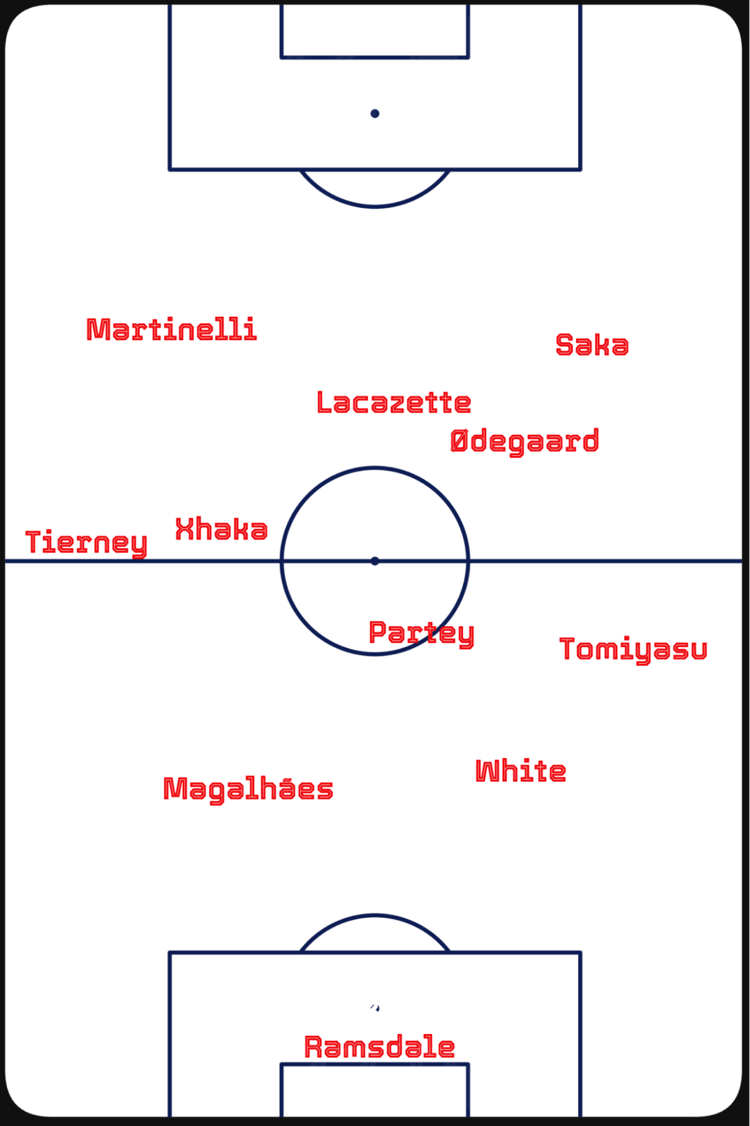
Jesus will be asked to link up with his teammates in this way, but his role will also focus on being inside the box when the ball reaches the final third.
Jesus should also help Arsenal improve defensively and even offer flexibility in terms of defensive shapes. The ex-Palmeiras man can fulfil a variety of roles in a pressing system whether they involve chasing the ball, making curved runs to force the ball to a side or even closing passing lanes into the opposition midfielders.
It is possible that Mikel Arteta switches to a 4-3-3 shape out of possession this season, especially if he intends to use Vieira as a regular starter, and in this case, Jesus’ defensive know-how will prove crucial when he leads the press alone.
On paper, this deal looks to be a win-win situation for all parties involved. Arsenal are getting a top-quality player to lead the line for them, Manchester City are getting a good fee for a squad player, and Jesus is getting the promise of regular game-time and a crucial role in a side that will want to qualify for the Champions League in the near future.

